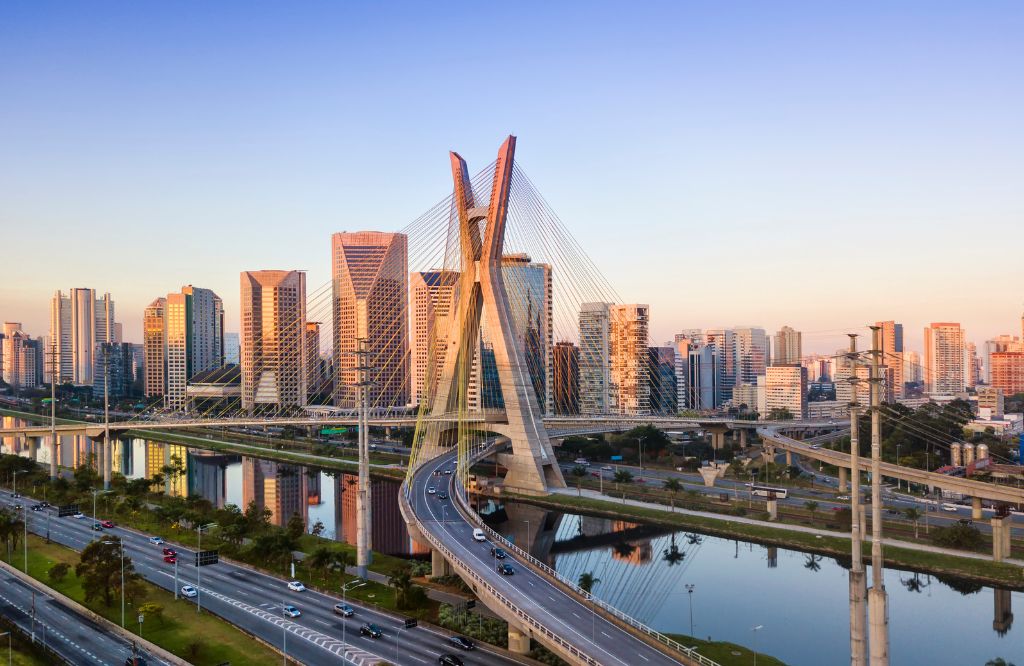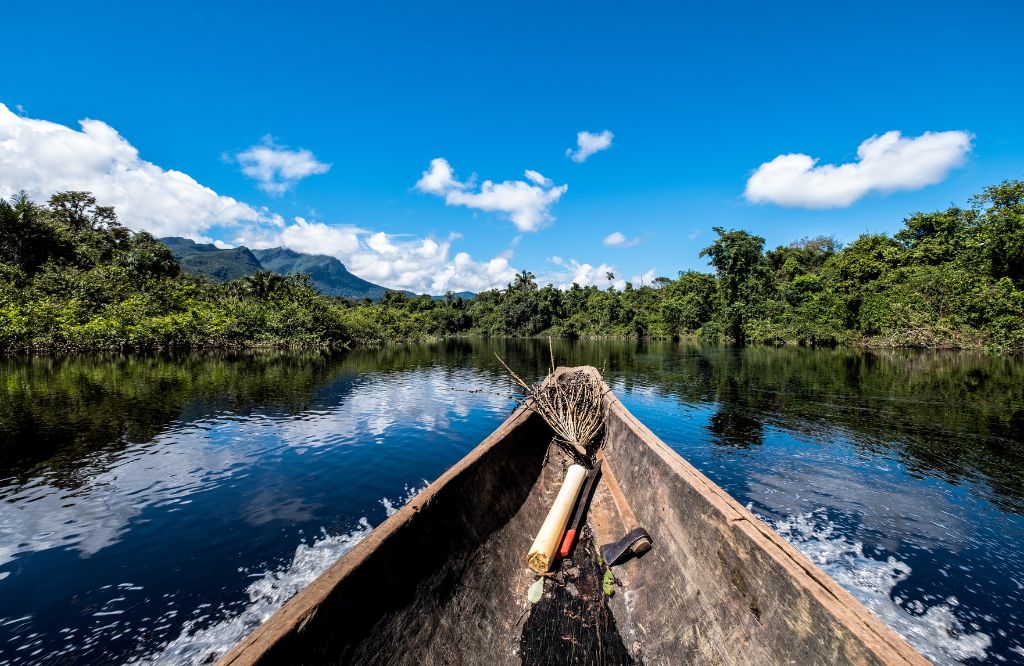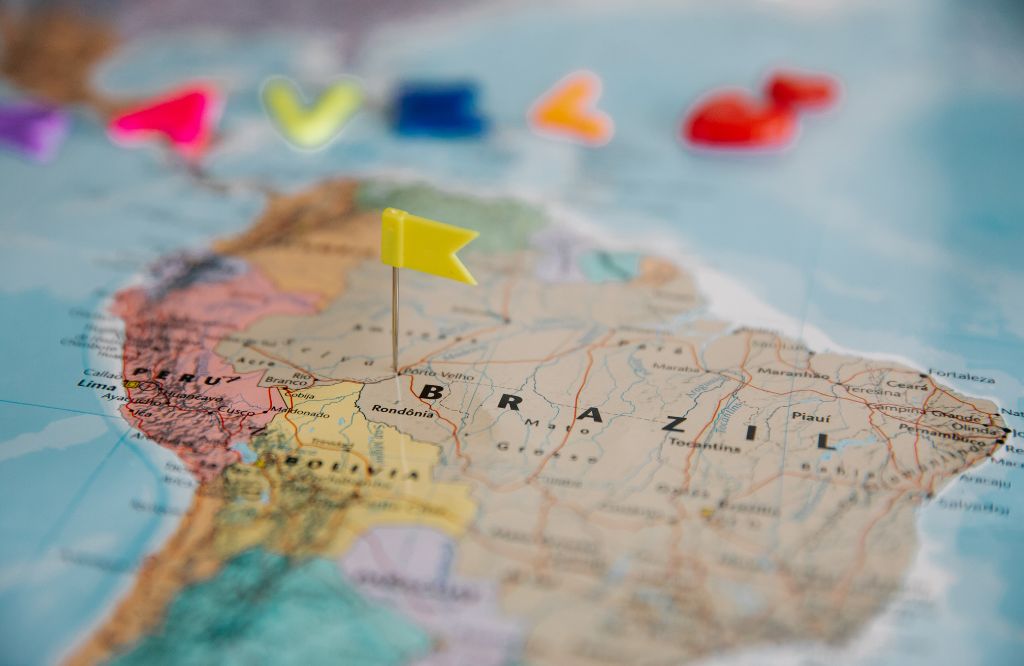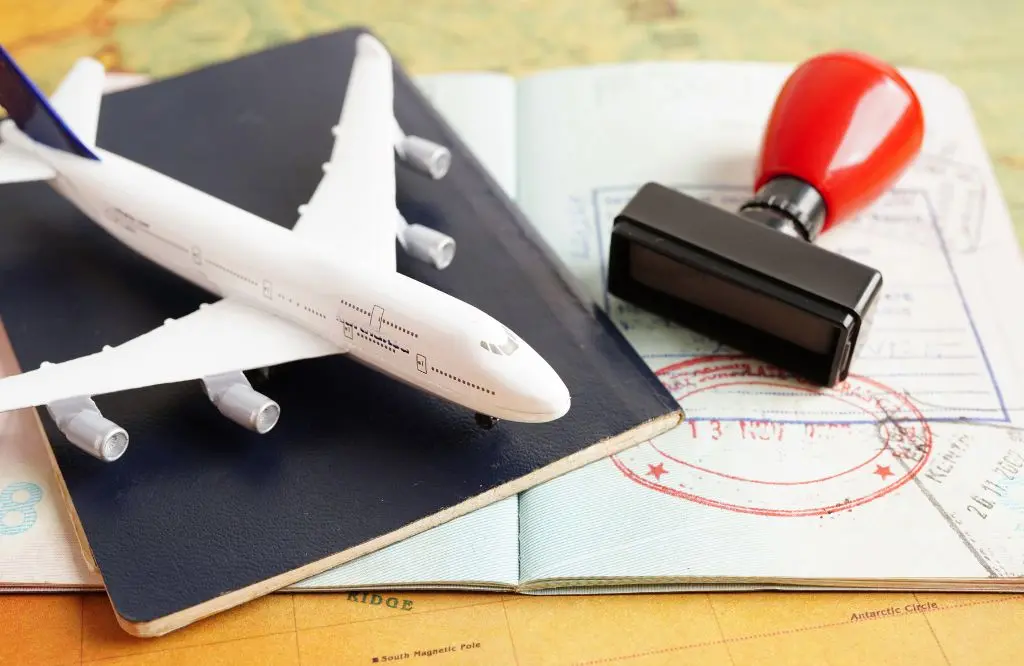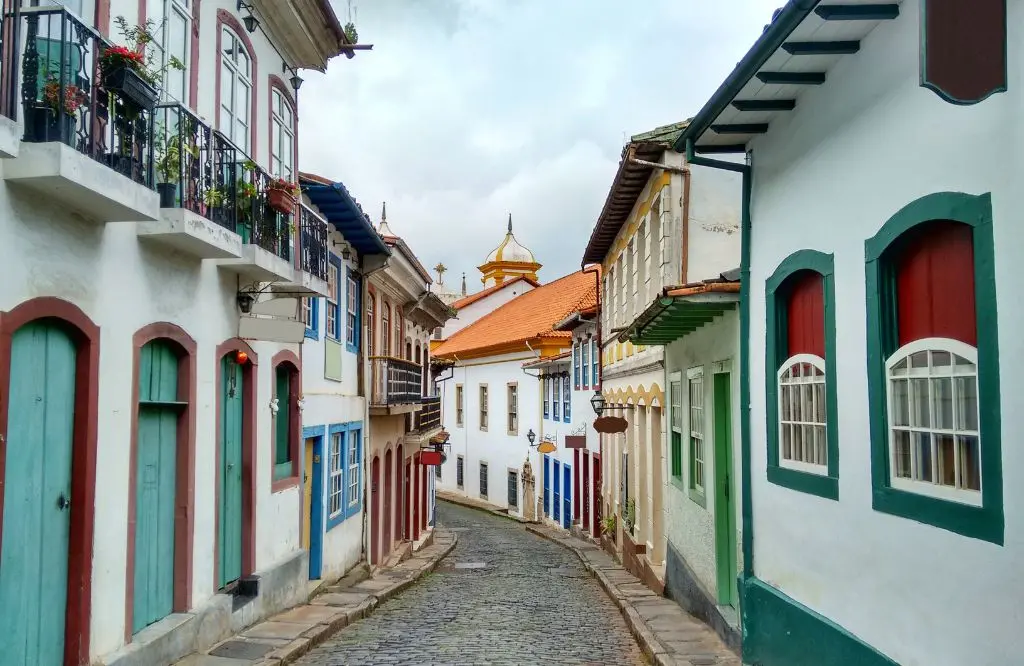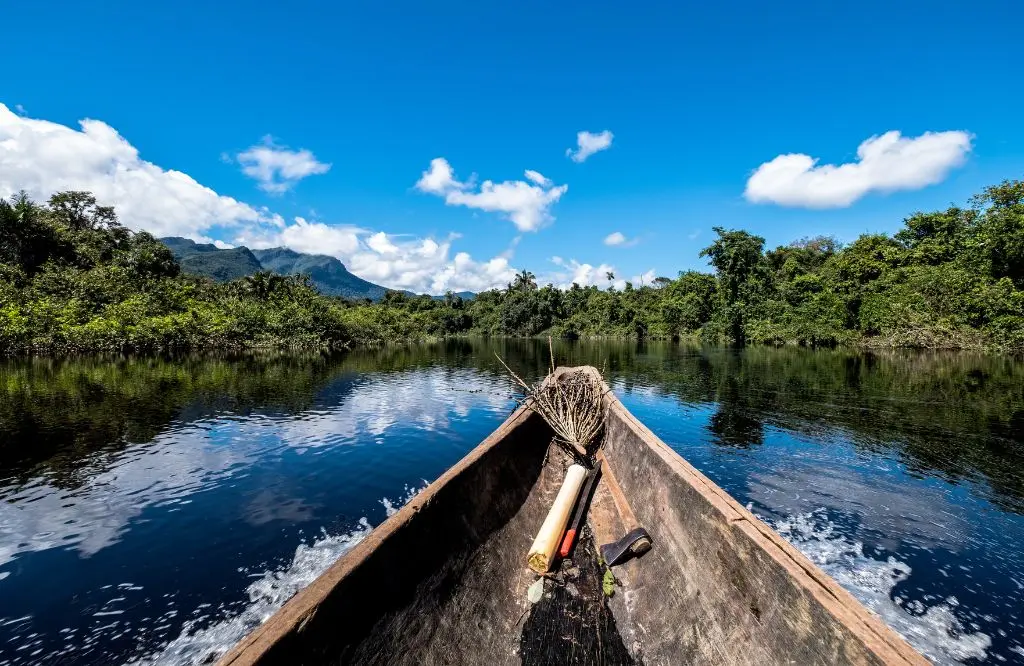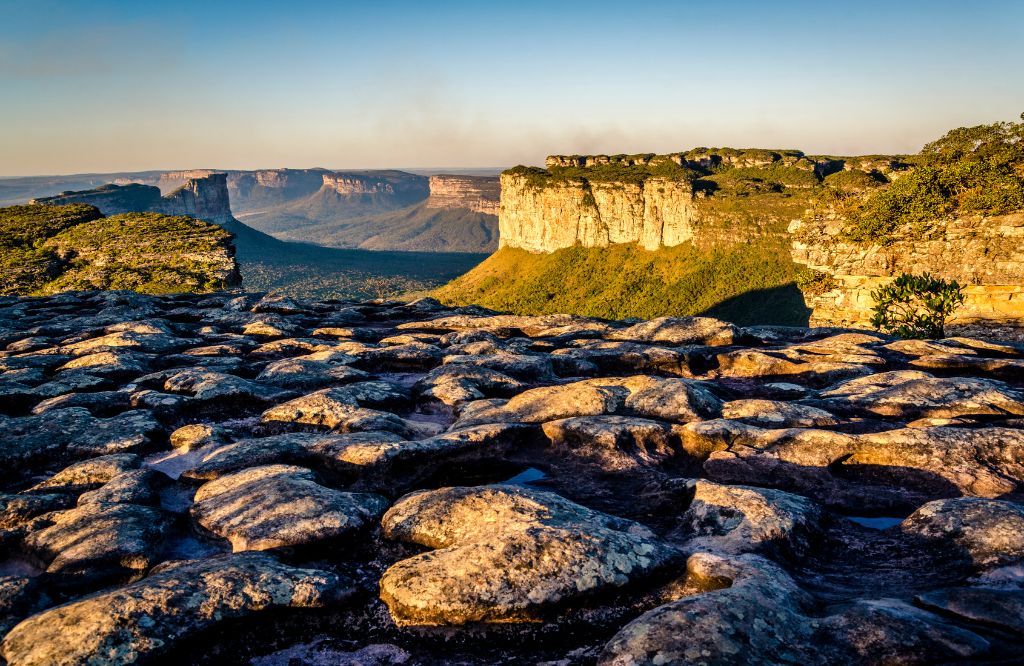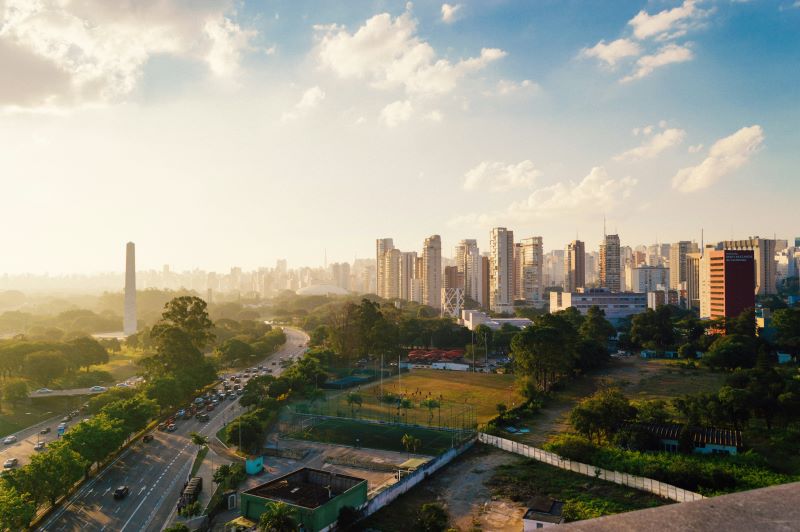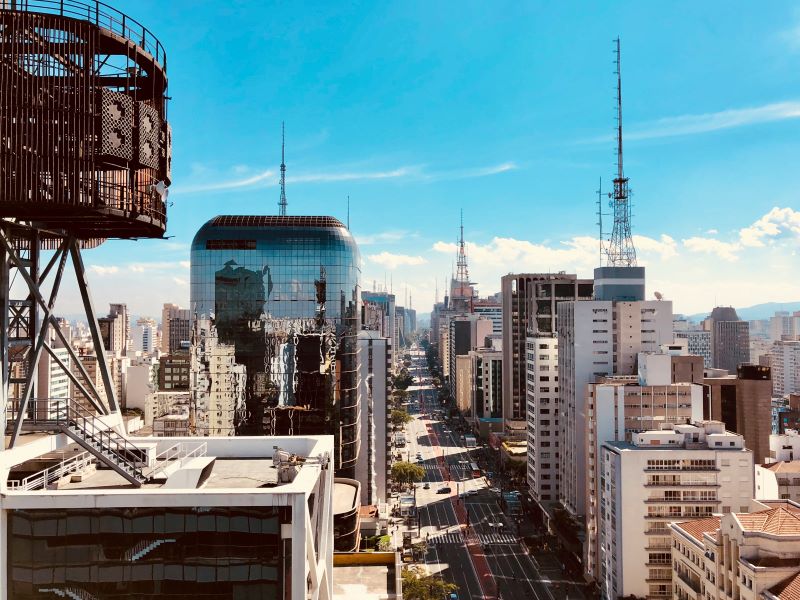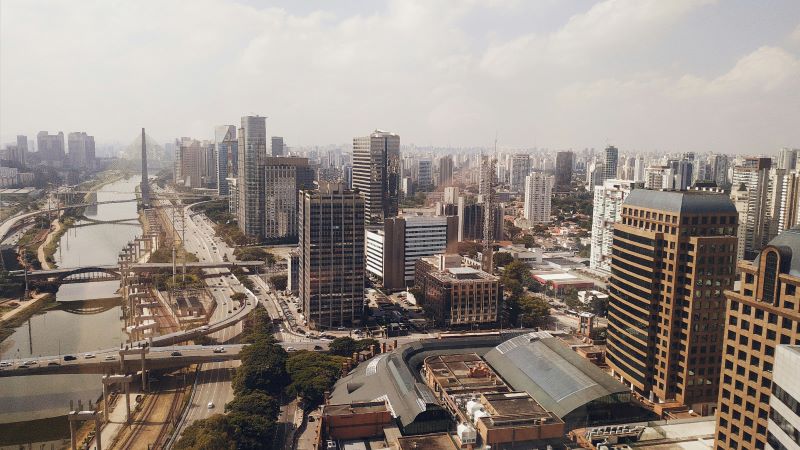Discover the best ecotourism destinations in Brazil to experience Brazilian nature at its finest
Want to connect with nature without leaving the country? Many people think Brazil is all about Carnival and soccer, but the truth is we have breathtaking ecotourism destinations! Brazil offers amazing options for those seeking the best ecotourism destinations.
To give you an idea of the sector’s growth, ecotourism and nature tourism represent 60% of the tourism sector’s revenue in Brazil, according to a survey by Sebrae with the support of the Ministry of Tourism.
Therefore, today we’ll explore 5 places that will make you fall even more in love with our country and want to explore every corner. Grab your hiking boots and let’s go!
Read in this post
- ATM24h in Brazil
- 5 best ecotourism destinations in Brazil
- Positive impact: How ecotourism benefits local communities and the environment
- Discover Brasil ATM (A Todo Momento)
- FAQ
ATM24h in Brazil
| Where | Location |
|---|---|
| Curitiba | See all the points here |
| Rio de Janeiro | See all the points here |
| Porto Alegre | See all the points here |
| São Paulo | See all the points here |
5 best ecotourism destinations in Brazil
From lush forests to hidden waterfalls, our country offers incredible options for those looking to connect with nature. We’ve prepared a list of the 5 best ecotourism destinations in Brazil that will make you want to pack your bags immediately. Check it out below:
1. Amazon, various states: Discover the world’s largest tropical rainforest
Exploring the Amazon is an unparalleled experience for nature lovers. This tropical rainforest, the largest in the world, covers about 60% of Brazil’s territory and spans states such as Amazonas, Acre, Roraima, Rondônia, Pará, Amapá, Maranhão, and Tocantins. Home to approximately 10% of the world’s biodiversity, the Amazon hosts thousands of plant and animal species, many of which are endemic.
Additionally, the region plays a crucial role in regulating the global climate and is one of the planet’s main carbon sinks.
What to do
- Jungle trails: Walk through trails that cross the dense forest, allowing you to observe the region’s unique biodiversity.
- Boat tours: Explore the Amazonian rivers, such as the Rio Negro and Rio Solimões, and witness the famous meeting of the waters.
- Visit local communities: Understand the culture and way of life of the riverine and indigenous communities.
Practical tips
- Best time to visit: Choose the dry season, from July to November, when access to trails is easier.
- Essential equipment:
- Lightweight, long-sleeve clothing for insect protection.
- Waterproof hiking boots.
- Hat and sunscreen.
- Health and safety:
- Get vaccinated against yellow fever in advance.
- Use effective insect repellent to avoid bites.
- Sustainability:
- Choose eco-lodges committed to environmental preservation.
- Avoid disposable plastics and collect all your trash.
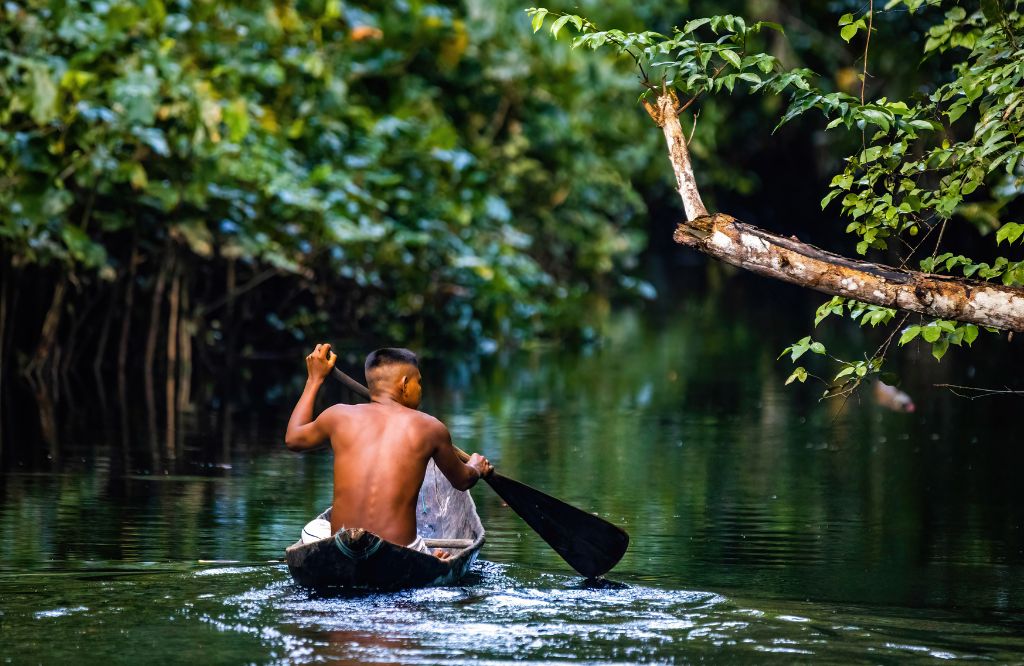
2. Chapada dos Veadeiros, Goiás: A paradise of biodiversity and natural beauty
Exploring Chapada dos Veadeiros is an unforgettable experience for nature lovers. This national park, located in the state of Goiás, is known for its impressive rock formations, waterfalls, and rich biodiversity, which includes several endemic species. Chapada is considered one of the best ecotourism destinations in Brazil and is part of the UNESCO World Heritage.
Additionally, the region is famous for its mysticism and special energies, attracting visitors seeking peace and spiritual connection.
What to do
- Trails and waterfalls: Explore trails leading to spectacular waterfalls, such as Almécegas Waterfall and Santa Bárbara Waterfall.
- Wildlife and flora observation: Discover the rich biodiversity of the cerrado, with numerous plant and animal species to observe.
- Visit local villages: Get to know the local communities, such as Alto Paraíso and São Jorge, and experience the regional cuisine.
Practical tips
- Best time to visit: Choose the dry season, from May to September, when the trails are more accessible and the waterfalls have an ideal water volume.
- Essential equipment:
- Wear lightweight and comfortable clothing for hiking.
- Bring suitable footwear for trails and swimming.
- Don’t forget a hat, sunscreen, and a backpack with water and snacks.
- Health and safety:
- Stay hydrated and protect yourself from the sun during hikes.
- Respect park rules and follow local guides’ instructions.
- Sustainability:
- Choose accommodations that practice sustainable tourism.
- Collect all your trash and help preserve the natural beauty of Chapada.
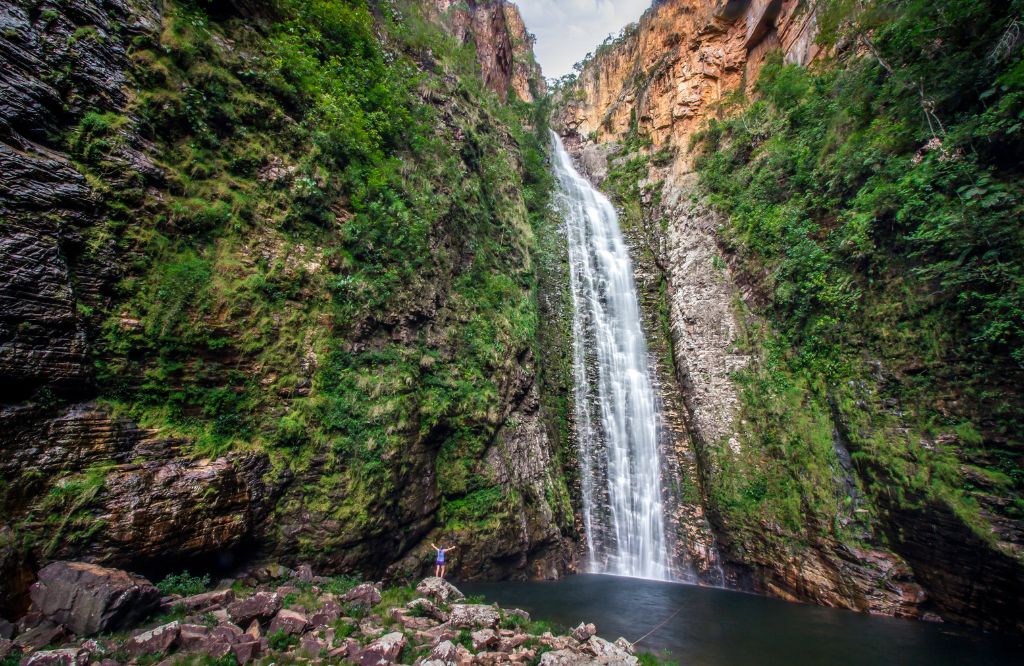
3. Chapada Diamantina: A natural treasure in the heart of Bahia
Exploring Chapada Diamantina is a journey through one of Brazil’s most impressive national parks. Located in the center of Bahia, this mountainous region covers an area of 152,000 hectares and is known for its spectacular rock formations, mysterious caves, and stunning waterfalls. Chapada Diamantina is a former diamond mining site that has transformed into a paradise for ecotourists and adventurers.
The region is also famous for its rich biodiversity, hosting various endemic species of flora and fauna, as well as archaeological sites with rock paintings.
What to do
- Trails and waterfalls: Explore iconic trails like Vale do Pati and visit famous waterfalls such as Cachoeira da Fumaça and Poço Azul.
- Caves and grottos: Discover underground wonders at places like Gruta da Lapa Doce and Gruta Azul.
- Historic towns: Visit Lençóis, Mucugê, and other charming towns that preserve the architecture and culture from the mining era.
Practical tips
- Best time to visit: The region can be visited year-round, but the period from April to October offers less rain and milder temperatures.
- Essential equipment:
- Bring lightweight and comfortable clothing for hikes.
- Use appropriate footwear for trails and rocky terrain.
- Don’t forget a flashlight for cave exploration, sunscreen, and insect repellent.
- Health and safety:
- Hire local accredited guides for more challenging hikes.
- Stay hydrated and bring energy snacks for long walks.
- Sustainability:
- Choose lodges and tour operators committed to sustainable practices.
- Respect national park rules and leave no trash on the trails.
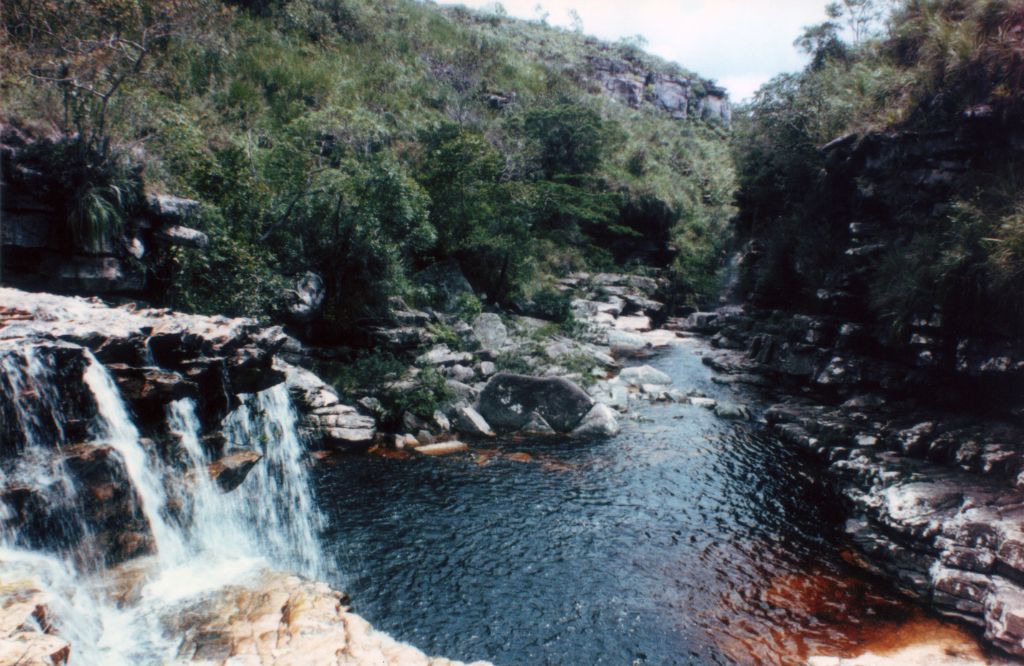
4. Bonito, Mato Grosso do Sul: The paradise of crystal-clear waters
Exploring Bonito is diving into one of Brazil’s most fascinating ecotourism destinations. Located in the southwest of Mato Grosso do Sul, Bonito is famous for its crystal-clear waters, stunning caves, and lush biodiversity. The region is part of the Cerrado biome and the Rio da Prata Basin, housing an impressive variety of fish and aquatic plants.
Bonito stands out for its sustainable tourism model, with strict visitor control at each attraction, ensuring the preservation of its unique ecosystems.
What to do
- Snorkeling: Explore crystal-clear rivers like Rio da Prata and Rio Sucuri, observing colorful fish and underwater vegetation.
- Caves and caverns: Visit Gruta do Lago Azul, with its turquoise waters, and Gruta de São Miguel, with its impressive rock formations.
- Waterfalls: Discover Cachoeira do Aquidaban and Balneário do Sol, perfect for refreshing baths.
Practical tips
- Best time to visit: The region can be visited year-round, but from December to March the waters become clearer due to the rains.
- Essential equipment:
- Bring swimsuits and footwear suitable for getting wet during water activities.
- Use biodegradable sunscreen to avoid polluting the waters.
- Don’t forget sunglasses and a hat for protection during tours.
- Health and safety:
- Book your activities in advance, as there is a visitor limit per attraction.
- Always follow the instructions of local guides during activities.
- Sustainability:
- Choose certified tour operators committed to sustainable practices.
- Respect the rules of each attraction to minimize environmental impact.
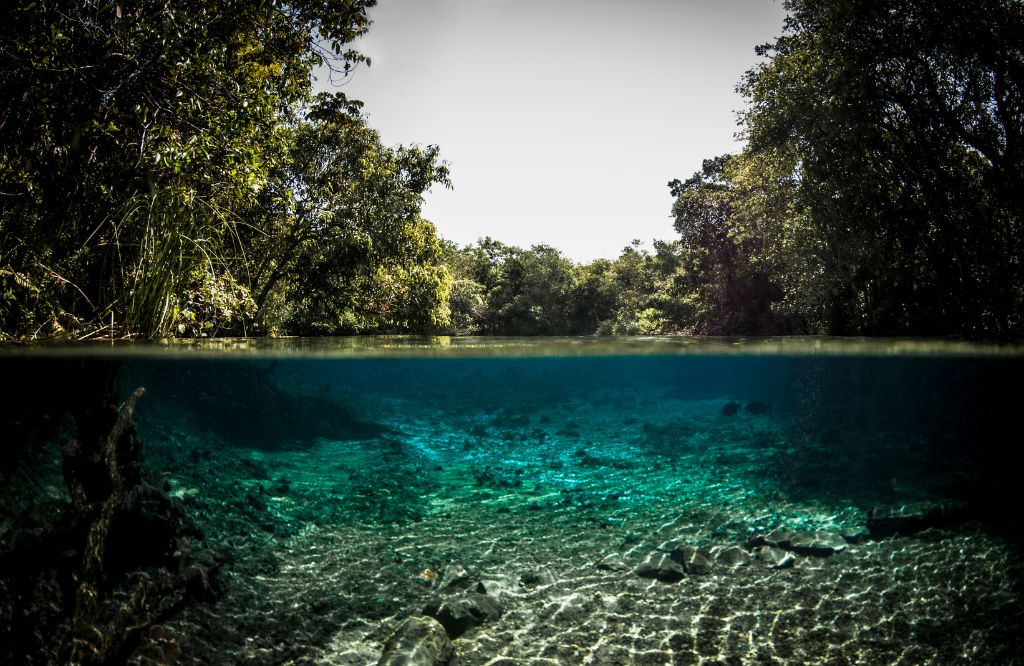
5. Rio de Janeiro: The marvelous city between the sea and the mountains
Exploring Rio de Janeiro is experiencing one of the world’s most iconic cities. The capital of the state with the same name, Rio is famous for its stunning beaches, breathtaking landscapes, and vibrant culture. The city, which was once the capital of Brazil, is home to Christ the Redeemer, one of the New Seven Wonders of the World, and Sugarloaf Mountain, globally recognized symbols.
Rio de Janeiro is a unique metropolis, blending nature and modernity in the same setting. Additionally, it offers a fascinating mix of cultural and natural experiences.
What to do
- Beaches: Relax on the famous beaches of Copacabana and Ipanema, or discover quieter beaches like Joatinga and Grumari.
- Tourist attractions: Visit Christ the Redeemer on Corcovado, take the cable car up to Sugarloaf Mountain, and explore the historic downtown.
- Culture: Experience the Sambadrome, the heart of the Rio Carnival, and visit museums like MAR and the Museum of Tomorrow.
Practical tips
- Best time to visit: Rio can be visited year-round, but summer (December to March) is the high season, with ideal beach weather.
- Essential equipment:
- Bring lightweight and comfortable clothing, as well as swimwear.
- Wear comfortable shoes for walking around the city.
- Don’t forget sunscreen, sunglasses, and a hat for the intense sunny days.
- Health and safety:
- Stay hydrated, especially during the hotter months.
- Be mindful of your belongings in crowded areas and use common sense when moving around the city.
- Sustainability:
- Opt for tours and operators that respect the environment and local communities.
- Dispose of waste properly and avoid using disposable plastics on the beaches.
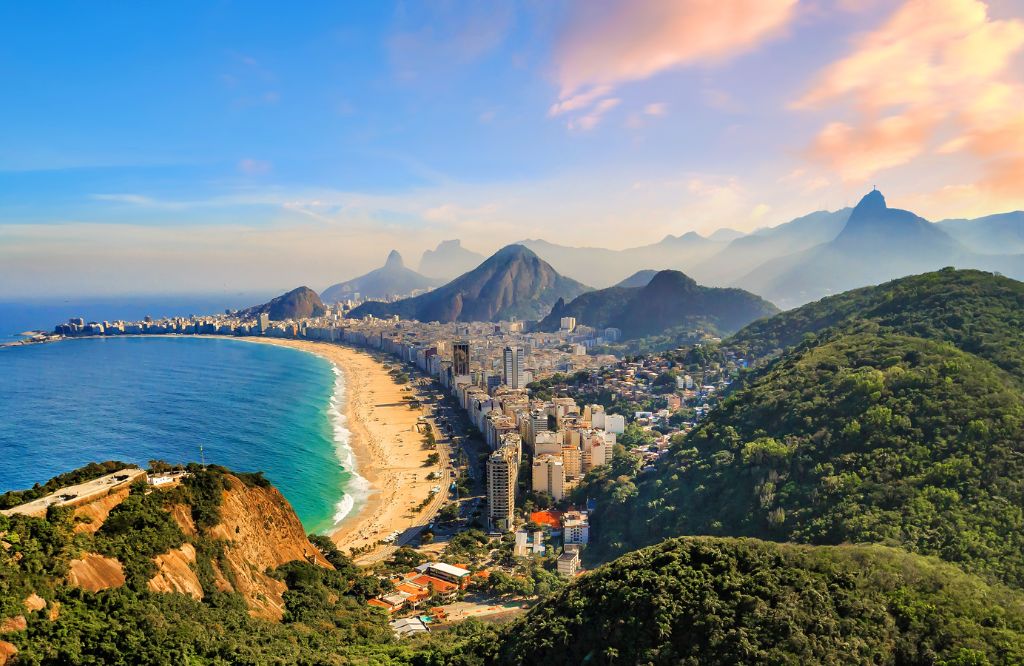
Positive impact: How ecotourism benefits local communities and the environment
When practiced responsibly and consciously, ecotourism goes far beyond providing unique experiences for travelers. It becomes a powerful tool for sustainable development, directly benefiting local communities and contributing to environmental preservation.
In Brazil, a country of exuberant biodiversity and rich cultural diversity, the positive impact of ecotourism is particularly significant. Therefore, in addition to knowing the best ecotourism destinations in Brazil, it is important to understand the impact and how to be a more conscious tourist.
Benefits for local communities
Ecotourism has the power to positively transform the lives of people living in areas of great natural wealth. Through this practice, entire communities find new opportunities for development and cultural appreciation.
Job and income generation
Ecotourism creates job opportunities in various areas, such as local guides, accommodation, food, and handicraft production. In regions such as the Amazon and the Pantanal, many communities have found sustainable economic alternatives in ecotourism.
Cultural preservation
The interest of tourists encourages the maintenance and appreciation of local traditions, festivals, and cultural practices. Indigenous and quilombola communities have the opportunity to share their culture, strengthening their identity and ensuring that ancestral knowledge is passed on to new generations.
Regional economic development
The flow of tourists brings financial resources to often remote and economically needy regions. Investments in infrastructure, such as roads and communications, benefit not only tourism but the entire local community. This economic development can result in significant improvements in residents’ quality of life, from access to education to better health services.
Positive impact on the environment
Ecotourism not only benefits communities but also plays a crucial role in ecosystem preservation. By creating economic value for intact nature, its long-term conservation is encouraged.
Conservation of natural areas
Ecotourism generates funds and incentives for the protection of national parks, reserves, and other important ecosystems. For example, the Chapada Diamantina National Park in Bahia has seen a significant increase in conservation efforts thanks to sustainable tourism.
The presence of conscious tourists also helps deter illegal practices such as hunting and deforestation, as it creates constant vigilance over these areas.
Environmental education
Visitors and local communities learn about the importance of environmental preservation through direct experiences with nature. Many ecotourism projects include educational programs about local fauna, flora, and ecosystems, creating conservation ambassadors who take these messages back to their home communities.
Alternative to destructive exploitation
Ecotourism offers an economic option that does not rely on the unsustainable exploitation of natural resources. In some regions of the Amazon, communities that once depended on deforestation or predatory hunting are now dedicated to ecological tourism.
Success stories in Brazil
Brazil is rich in success stories where ecotourism has become a catalyst for positive change. These examples inspire and show the way to a more sustainable future in tourism.
Tamar Project
Besides protecting sea turtles, the Tamar Project generates jobs and income for coastal communities through ecotourism. Its bases along the Brazilian coast conduct research and conservation actions, as well as offering educational experiences for visitors, creating collective awareness about the importance of marine preservation.
Mamirauá Sustainable Development Reserve
Located in the state of Amazonas, Mamirauá is a pioneer in community-based ecotourism, directly benefiting riverine populations. The project allows visitors to experience life in the Amazon rainforest while contributing to biodiversity conservation and local socioeconomic development.
Bonito, Mato Grosso do Sul
Bonito has become a model of sustainable ecotourism, with strict visitor control and preservation of its crystal-clear waters. The city has implemented a voucher system that limits the number of tourists at each attraction, ensuring environmental preservation and the quality of the visitor experience.
How travelers can contribute
Every traveler has the power to make a difference. Through conscious choices and responsible actions, tourists can maximize the positive impact of their trips and contribute to more sustainable tourism.
Conscious choice
Opt for operators and accommodations committed to sustainable practices and environmental certifications. Prefer local guides and services offered by the community, ensuring that your trip has a direct positive impact on the local economy.
Respect for local guidelines
Always follow conservation guidelines and rules established at each destination. Practice the “leave no trace” principle, minimizing your impact on the environment. Respect visitation limits and restricted areas, understanding that these measures are essential for the preservation of the site.
Support for the local economy
Buy local crafts and products, ensuring that money directly benefits the community. Experience local cuisine in establishments run by local residents. This practice not only enriches your cultural experience but also strengthens the local economy sustainably.
Engagement and learning
Participate in educational activities offered at destinations, seeking to learn more about the ecosystem and local culture. Share your positive experiences, encouraging others to practice responsible tourism. Become an ecotourism ambassador, taking the lessons learned into your daily life and inspiring others to do the same.
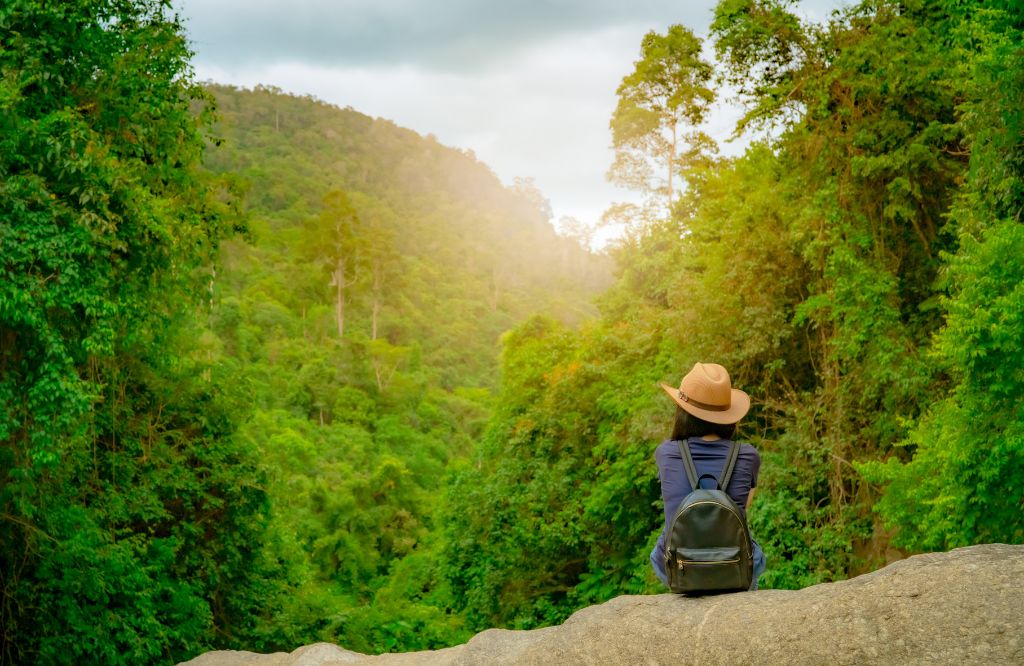
Discover Brasil ATM (A Todo Momento)
At Brasil ATM, we believe that Brazil is a country of unparalleled beauty and fascinating cultural diversity. Our portal, endorsed by the global brand ATM24h, is dedicated to sharing our love for Brazil and inspiring tourists to discover its wonders in a safe and informed way.
We offer accurate, up-to-date, and inspiring information in three languages, ensuring that you have everything you need to plan your trip with confidence. From comprehensive travel guides and detailed itineraries to planning tips, our content covers all travelers’ needs.
We aim to provide unforgettable experiences by revealing the natural and cultural beauties of Brazil. Whether exploring popular destinations like Rio de Janeiro and São Paulo or discovering hidden treasures like Lençóis Maranhenses and Fernando de Noronha, we are here to help you make the most of your journey.

FAQ
The best ecotourism destinations in Brazil include Bonito (MS), Chapada Diamantina (BA), Fernando de Noronha (PE), the Amazon (AM), Pantanal (MT/MS), Ilha do Cardoso (SP), and Iguaçu National Park (PR). Each destination offers unique experiences of contact with nature and Brazilian biodiversity. Read more.
Common activities include hiking, wildlife and flora observation, diving, snorkeling in crystal-clear rivers, boat tours, and visits to traditional communities. Each destination offers unique experiences based on its ecosystem and local culture. Read more.
Respect local conservation rules, use biodegradable sunscreen and repellent, take your trash with you, choose certified operators and local guides. Be informed about necessary vaccines and be prepared for the destination’s weather conditions. Read more.


